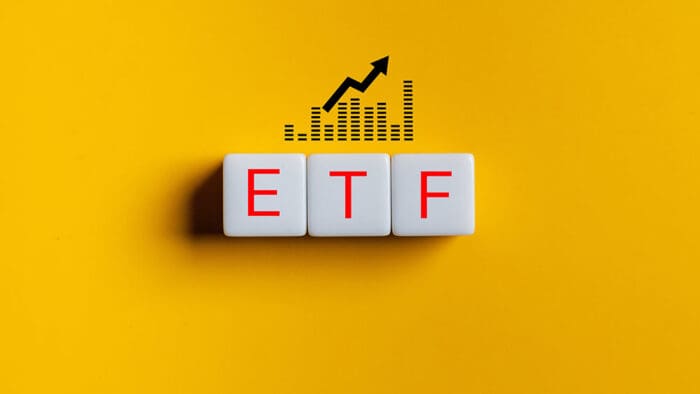Unusual foods, a vast selection of cheap wine, and friendly staff in tropical shirts helped the late Joe Coulombe turn Trader Joe’s into America’s most-loved grocery store.
Trader Joe’s doesn’t have loyal customers — it has a fanbase. People gladly brave notoriously long lines for the check-out counters and plan their weeks around the best shopping times (never go on Monday, we’ve been told).
The chain is so popular that an enterprising Canadian tried to bootleg it. In 2012, Michael Hallatt set up “Pirate Joe’s,” which was stocked with products he bought from Trader Joe’s across the border in Washington State. His business was going strong until 2017 when the U.S.-based grocer’s lawyers put a stop to it.
As far as business success stories go, Trader Joe’s is certainly unique among grocery retailers, which tend to not generate anything close to its cult-like enthusiasm. The company managed to carve out a niche for itself in the $785.5 billion U.S. market by embracing its quirkiness.
Trader Joe’s was founded in Pasadena, California in 1967 by San Diego native Joe Coulombe. A recent Stanford graduate, with a bachelor’s degree in economics and an MBA, Coulombe initially took a job at Rexall drug stores where he ran a new concept called Pronto Markets. The concept, designed to compete with then-Southern California convenience upstart 7-Eleven, didn’t work out.
But rather than let Rexall completely shut down the brand, Coulombe brought the Pasadena store from the drug chain and re-launched it.
All things tiki were popular at the time, so he decided to give his new store a tropical, tiki-inspired theme and give it a name similar to the legendary Beverly Hills restaurant Trader Vic’s. And so Trader Joe’s was born.
Although Trader Vic’s was known to be pricey, Coulombe wanted Trader Joe’s to be affordable. At the time, more people were graduating from college, international air travel was booming, and Americans were discovering foods that many ordinary supermarkets didn’t sell. Variety reported that Coulombe called Trader Joe’s ideal customer “the over-educated and the underpaid,” with a sophisticated palate but not necessarily a big bank account.
In 1972, Coulombe introduced the first Trader Joe’s private label product, granola. It proved to be a hit, and an instant game-changer for the company. The chain began to invest heavily in developing private-label products, which allowed it to keep costs down. Trader Joe’s private label brands Trader Giotto’s, Trader Ming’s, and Pilgrim Joe debuted in 1977.
Coulombe loved wine, and at the same time as he rolled out the private label granola, he began carrying California wines in his stores. In doing so, he helped put California wine on the culinary map. In an interview with the New York Times in 1987, he said, “I must sample about 4,000 wines a year. Of course, we don’t buy them all.” Eventually, the retailer launched its “two-buck Chuck” and made $1.99 wine a national sensation.
Good, cheap wine wasn’t the only foodie trend Trader Joe’s is credited with starting. The retailer sold whole bean coffee at a time when the International Delights brand was considered the crème de la crème of coffee and Starbucks was still years away from being a household name. Trader Joe’s was also the U.S.’s biggest importer of brie cheese and dijon mustard in the 1970s and 1980s. In another instance of being ahead of the curve, the chain began selling reusable canvas grocery bags in the 1970s.
Coulombe sold Trader Joe’s in 1979 to Theo Albrecht’s Aldi Nord, but continued to run the company until 1987. At the time of the sale, there were 19 Trader Joe’s stores in California. John Shields took over as CEO in 1987 and expanded into Arizona in 1993, the Pacific Northwest in 1995, and Boston in 1996. Between 1990 and 2001, Trader Joe’s quintupled the number of stores it had which led to a tenfold increase in profit. In 2008, a report from Bloomberg revealed that Trader Joe’s had the highest sales per square foot of any American grocery store.
Here is a map of every Trader Joe’s location in the U.S. currently, based on data gathered by Thinknum.

Under Albrecht’s Aldi Nord, Trader Joe’s retained the vision of Coulombe and the personality he infused into each location. Unlike the big box supermarkets the U.S. is known for, Trader Joe’s locations come across more like a neighborhood market and meeting space (even though parking in its cramped lots is often problematic). Typical U.S. supermarket chains have stores well over 100,000 square feet. Trader Joe’s stores, though, are usually around 12,000 square feet.
The retailer has managed to succeed by being different. Unlike most supermarkets, it doesn’t prioritize brands with big displays. Instead of sitting in large quantities on store shelves or in back rooms, items are swiftly purchased and replenished quickly. And without middlemen, it can offer both value pricing and a high level of customer service.
Even during the COVID-19 pandemic, Trader Joe’s remained popular, despite not offering conveniences like curbside pickup or delivery (it also isn’t on Instacart). I relied on Instacart for most grocery needs but still stood in long, socially-distanced lines of masked-up people for my weekly trips to Trader Joe’s.
Coulombe died in 2020 at 89, but his legacy clearly lives on in the chain’s 548 stores.
About the Data:
Thinknum tracks companies using the information they post online, jobs, social and web traffic, product sales, and app ratings, and creates data sets that measure factors like hiring, revenue, and foot traffic. Data sets may not be fully comprehensive (they only account for what is available on the web), but they can be used to gauge performance factors like staffing and sales.
—
Originally Posted on November 22, 2021 – How Trader Joe’s Beat Big Box Supermarkets While Staying True to Its Quirky Roots
Disclosure: Interactive Brokers
Information posted on IBKR Campus that is provided by third-parties does NOT constitute a recommendation that you should contract for the services of that third party. Third-party participants who contribute to IBKR Campus are independent of Interactive Brokers and Interactive Brokers does not make any representations or warranties concerning the services offered, their past or future performance, or the accuracy of the information provided by the third party. Past performance is no guarantee of future results.
This material is from The Business of Business - Thinknum Media and is being posted with its permission. The views expressed in this material are solely those of the author and/or The Business of Business - Thinknum Media and Interactive Brokers is not endorsing or recommending any investment or trading discussed in the material. This material is not and should not be construed as an offer to buy or sell any security. It should not be construed as research or investment advice or a recommendation to buy, sell or hold any security or commodity. This material does not and is not intended to take into account the particular financial conditions, investment objectives or requirements of individual customers. Before acting on this material, you should consider whether it is suitable for your particular circumstances and, as necessary, seek professional advice.




















Join The Conversation
If you have a general question, it may already be covered in our FAQs. If you have an account-specific question or concern, please reach out to Client Services.